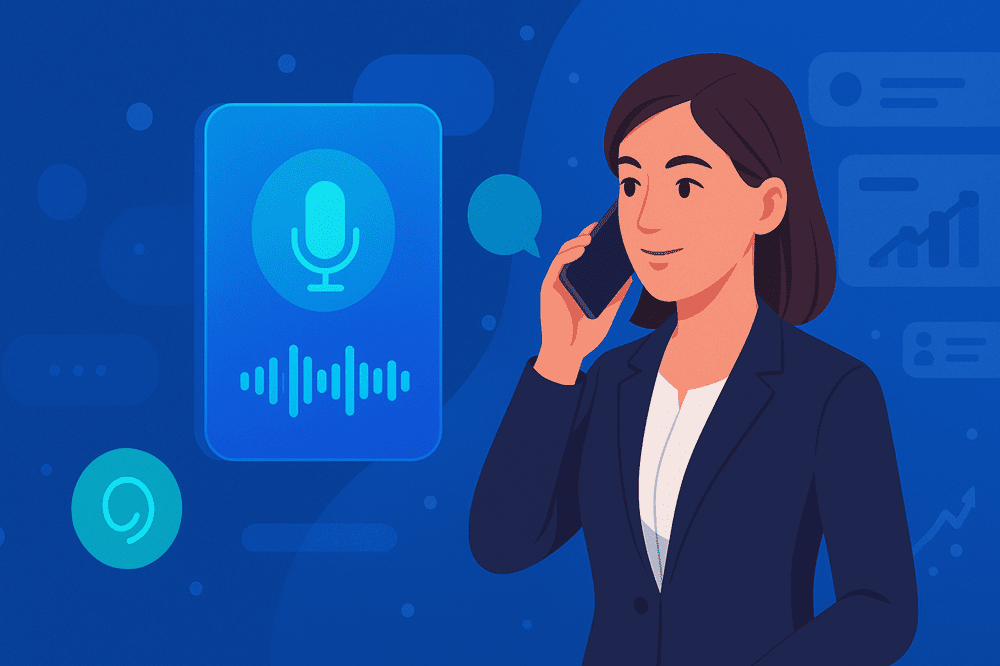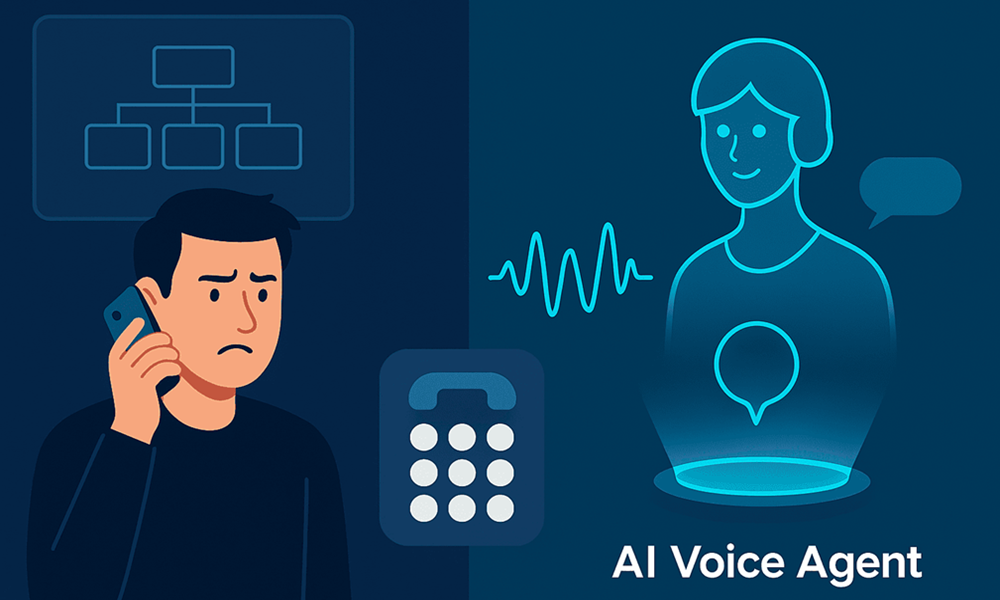Once upon a time, the IVR menu was a breakthrough.
“Press 1 for Sales. Press 2 for Support.”
It streamlined customer routing, cut staffing costs, and introduced self-service to the telephone.
But in 2025, that same experience feels like being stuck in a time loop—pressing buttons, repeating yourself, and waiting for a human who already asked for your name three menus ago.
Now, enter the AI voice agent. A system that doesn’t just route your call—it remembers your last interaction, understands your tone, and resolves your issue with something IVR never had: intelligence.
The Shift Businesses Can’t Ignore
Today’s buyers want instant answers, understanding, and efficient problem-solving, rather than just working their way through a set of options. They want (and will pay for) AI voice agents that give instant voice responses and can respond to human conversation.
They want agents to know how to help with their specific problem, not just tell them which department to talk to.
Market research firm Voicebot estimates that the revenues for voice agents powered by artificial intelligence will grow from $2.0 billion this year to $46.6 billion by 2030.
In contrast, it projects that revenue for the IVR system market will only rise from $7.2 billion in 2023 to $7.8 billion in 2030.
The numbers tell us something: businesses are now leaning toward IVR replacement by smarter, AI-powered systems.
What Makes AI Voice Agents Smarter?

Unlike a basic AI phone system that often works on rigid scripts, modern AI tools are designed to adapt in real time.
Significant advancements have been made in converting AI voice agents from traditional IVR systems. They use natural language processing and real-time data for dialogue, intelligent voice response, and to have “meaningful conversations” with customers.
With smart voice agents, the following is now possible:
- An eight-turn conversation (most of us only go three turns before we run out of gas) with over 90% intent recognition.
- Emotional hunches about the caller: Are they mad? Sad? Happy? In trouble?
- Making 8+ turn-calls feel personalized because the AI voice agents are integrated with CRM and ERP systems.
- Using 27 languages and various accents.
Traditional IVR systems are good for one thing: routing calls.
AI Voice Agent vs IVR: Performance Metrics Comparison
- First Contact Resolution: AI agents resolve ~65% of complex queries without escalation, while IVRs manage only ~25% of basic transactions.
- Average Handle Time: AI assistants average 3.8 minutes per call, whereas IVRs extend to 9.5 minutes due to caller drop-offs and re-routing.
- Customer Satisfaction (CSAT): AI interactions report over 85% CSAT, compared to around 62% for IVRs.
- Cost per Contact: AI voice agents cost ~$0.90 per contact, while IVRs cost about $0.70, but with lower resolution rates.
- Operational Impact: AI agents reduce the workload of live agents by up to 60%, whereas IVRs primarily handle entry-level queries.
When to Use AI?
Knowing when to deploy each system can define customer experience outcomes.
Use AI voice agents when:
- Customers want multistep resolution or personalized recommendations.
- You want to automate sales consultations, appointment scheduling, or technical support.
- You want consistent communication across channels (voice, chat, email).
- You want real-time sentiment analysis of customer feedback.
The debate of voice AI agent vs chatbot continues, but when it comes to handling cold calls and nuanced voice conversations, voice agents hold a distinct edge.
Importance of AI voice agents in B2B Cold-Calling Teams
Voice communication continues to be the most important component of generating leads for B2B teams. Yet, these teams often work with outdated systems that slow them down.
AI voice agents can help with this in several ways:
- Leading off with immediate qualifications en masse.
- Following up with intelligent automation.
- Evolving in real time based on prospect behavior.
- Reducing time spent hammering away at unqualified leads.
If you’re wondering how to integrate AI voice agents into your existing tech stack, the answer lies in APIs and flexible CRM connectors.
A well-designed AI voice assistant can now emulate human-like conversation, reducing friction in customer interactions. With these technologies, when deployed effectively, ai call handling becomes an accelerator, not a bottleneck, for outbound sales.
The Future of Voice Technology
In the future, AI voice technology is poised to develop even further:
- Emotional intelligence involves detecting multiple emotional states during calls.
- Predictive support resolving issues proactively.
- Voice commerce is projected to exceed $40 billion by 2027.
As we look toward the future of voice AI, expect innovations like multilingual emotional recognition and predictive voice assistance. These features are already in pilot rollouts and appear ready to reshape what voice AI can do.
Conclusion
VoAgents.ai is committed to building advanced voice assistants that operate like next-gen sales and support teams.
Our agents:
- Handle high volumes of inbound and outbound calls
- Supercharge lead capture and AI voice customer support
- Integrate well with existing systems like Salesforce and Twilio. With seamless ai voice agent integration into platforms like Salesforce, businesses can streamline their workflows.
- Operate 24/7, like a well-balanced human team
For any business wanting to strengthen its customer interactions—virtually or in person—the use of AI voice agents is no longer experimental. It’s essential.




